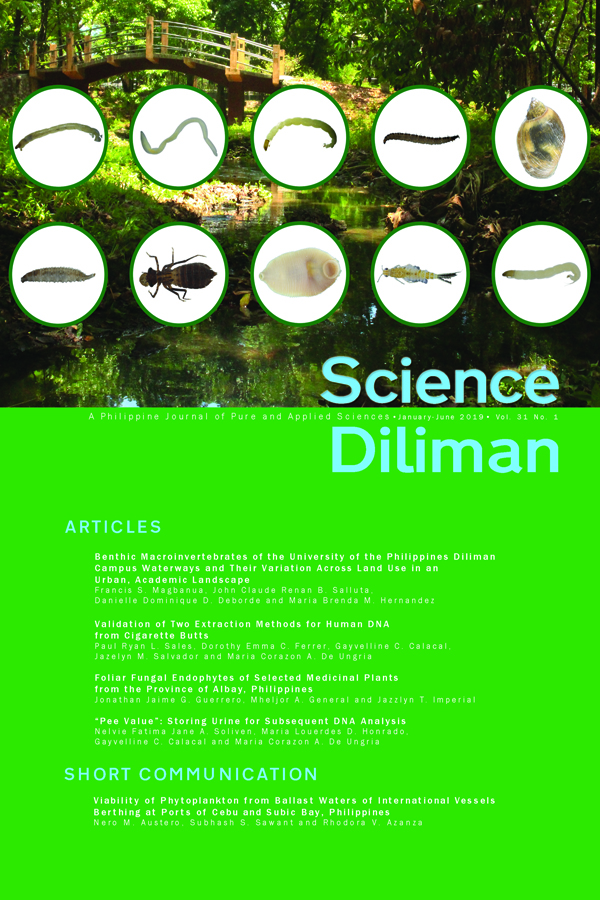“Pee Value”: Storing Urine for Subsequent DNA Analysis
Abstract
Drug abuse is a prevalent problem in the Philippines. With the increased drive to apprehend individuals who partake in the use of illegal drugs, there is a need to re-examine the handling and storage procedures for urine samples, which may be tested to prove or disprove allegations of drug use. With the availability of forensic DNA technology as the most powerful tool for human identification, the inclusion of DNA testing in decision trees used by law enforcers and government laboratories during drug investigations is expected to improve the process of determining actual drug users while promptly addressing allegations of misconduct. Because DNA testing is a relatively novel procedure previously not considered in drug investigations in the Philippines, there is a need to test whether storage procedures for urine that showed positive results allow for subsequent DNA testing. Samples that test positive for drugs are routinely stored at -20oC for up to one year prior to disposal. In this study, urine DNA samples were extracted from 20 male individuals. The samples were subsequently stored at room temperature, 4°C, and -20°C for 2 months and 9 months. This was followed by DNA profiling using the PowerPlex® 21 System. Overall, DNA extracted from urine samples stored at cool temperatures (4°C and -20°C) were found to provide more consistent DNA prof ile results compared to samples that were stored at room temperature. We propose here a decision tree for drug testing from start to end that should serve as a decision support tool for Philippine government agencies engaged in drug investigations.
Keywords: DNA prof iling, short tandem repeats, storage duration, storage temperature, urine DNA extraction



